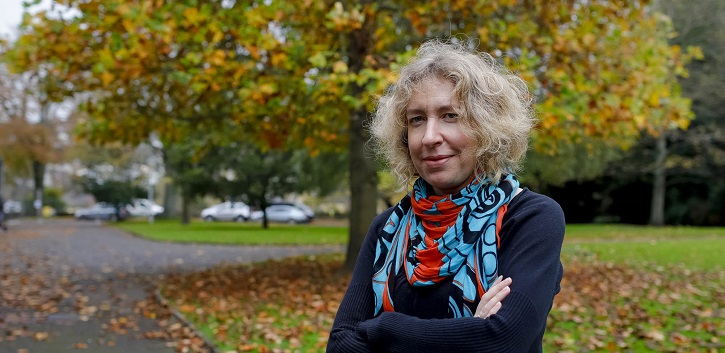2017 Press Releases
Op-ed: The statistics don’t lie: Some of us don’t count

The failure to update the Sexual Abuse and Violence in Ireland study of 2002 renders victims of such behaviour invisible and is a political act, says Dr Claire Edwards.
The debate about the Government’s reluctance to commission a second Sexual Abuse and Violence in Ireland (SAVI) study, combined with the statement from Rape Crisis Network Ireland (RCNI) that, due to funding cuts, it would no longer be able to release national statistics on sexual violence, has raised crucial questions about how we are to understand this deeply personal, but necessarily public, issue in Irish society.
The original SAVI study, conducted in 2002 by the Royal College of Surgeons, in conjunction with the Dublin Rape Crisis Centre, was one of the most comprehensive, rigorous studies of sexual violence in the State.
Comprising 3,000 respondents, it captured both reported and unreported incidents of sexual assault.
It highlighted how sexual violence was experienced by specific groups in Irish society, including the Travelling community and people with intellectual disabilities.
The failure to recommission the study, 15 years later, is hard to comprehend, in the context of the last week. We have been reminded, daily, of the traumatic effects of rape and sexual violence, and the rapidly changing societal dynamics — including the role of social media and online abuse — mean we need to constantly review and update our understanding of the issue.
A couple of weeks ago, the RCNI said that “stats may not be the most exciting news item, but they are critical to effect change”.
This is certainly the case. As social scientists, we are aware of the need to produce research and statistics that address different social issues, whether by raising awareness or allocating resources and planning services appropriately.
However, statistics also indicate something more substantial about the relationship between knowledge and power in the act of governing, and why certain issues emerge into public view, while others remain silent.
This is something I have repeatedly grappled with in my own research on people with disabilities who are victims of crime in Ireland: the silence, in terms of statistics, erases disabled people from view, leading people to ask ‘is this even an issue in the first place?’ SAVI was one of the only sources of data that made people with disabilities visible as survivors of sexual violence.
Social theory has long-provided an interpretive lens to illuminate how knowledge and power operate in the process of governing.
Tracing the emergence of modern societies from the eighteenth century, we can see the imperative to count, classify, and order populations — through statistics, and institutions such as prisons, hospitals, and schools — as key mechanisms in the government of populations and individuals.
Statistics aren’t just numbers for numbers’ sake; they have a political imperative. Whether we like it or not, statistics are an inherent part of how we think about, and make classifications within, society, shape our ideas about social norms, make people and issues visible, and constitute our own identities as human beings.
With this in mind, we need to take a step back to question why some issues become constructed as problems in the first place, and why others do not, and, also, how acts of knowledge (such as creating statistics) are intimately tied up with power.
These observations would seem apt in the case of the SAVI2 debate, where politicians’ reluctance to support the study creates a silence, but one which is no less an exercise of power.
Studies of the history of statistics, for example, have shown how decisions to not record statistics kept societies in the dark about key historical moments, including casualties during periods of war.
In this context, we need to excavate the problem — or, rather, its absence — by considering the historical context, value systems, social, economic and political relations, and modes of governing which have led us to the present day.
Understanding the SAVI2 debate, then, means asking whose knowledge is valued (or not) in understanding rape and sexual violence in Ireland. What understandings of sexual violence and rape circulate in Irish society, and how, historically, have we arrived at these understandings?
How might the government’s approach be affected by the fact that sexual violence and rape predominantly affect women, for example, in a country whose record on women’s rights and gender equality have been found wanting?
Why are particular arms of the Irish state seemingly ambivalent to ‘evidence’ in this particular policy arena, but in other areas seem to have embraced the (albeit problematic) evidence-based agenda with some enthusiasm?
And how is the SAVI2 debate represented through the language and discourses that politicians use, where the economic, in the form of a SAVI2’s oft- cited €1m cost, appears to trump other framings of the problem?
What the SAVI2 case does demonstrate is the potential for acts of resistance to central governmental agendas that are represented by groups and commentators who have powerfully asserted the need for statistics to highlight this highly private, yet profoundly political, issue in Irish society.
The process of governing involves a range of agencies that have the capacity to articulate alternative meanings and framings of the issue.
In particular, the RCNI, and voices of rape survivors, who are challenging central government’s discourses and decision, are a vital part of this process, and may yet succeed in securing the much-needed SAVI2 study.
Dr Claire Edwards is director of the Institute for Social Science in the 21st Century (ISS21) and lecturer in the School of Applied Social Studies at University College Cork.
